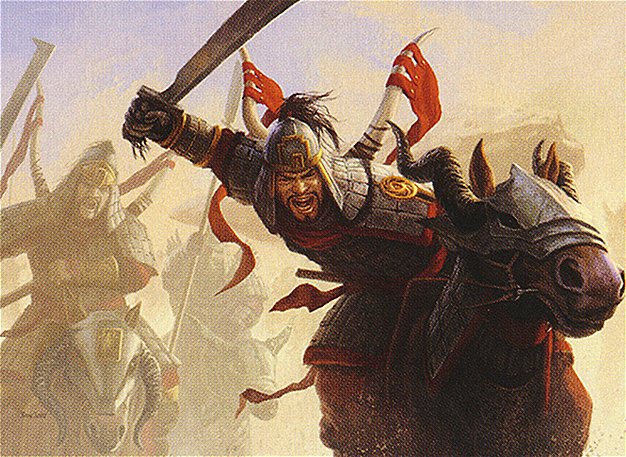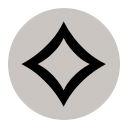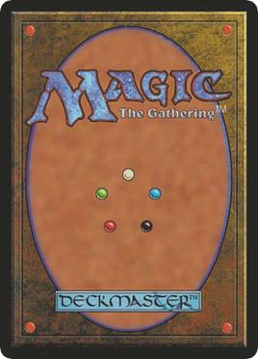 Art by Dan Murayama Scott
Art by Dan Murayama ScottQuick overview
Khans of Tarkir set cube, with modifications made to refine and enrich the draft experience. Drafted with rarity collated packs
Khans of Tarkir is widely hailed as the pinicle of draft formats, due to the strategic complexity and achetype richness it fosters with its design. It excels in archetype balance, a collection of readily apparent and emergent decks, and the depth of play offered by the Morph mechanic. This environment aims to recreate the best of the Khans of Tarkir draft format by highlighting the sets strengths and making improvements based on soley focusing on draft and via play experience.
Welcome to the plane of Tarkir
This cube is designed to be drafted in rarity collated packs. Packs follow the following rarity distribution:
4-3-2-1
This means 4 of each Common, 3 of each Uncommon, 2 of each Rare, and 1 of each Mythic.
Players draft packs following the standard rarity distribution of traditional draft packs
1 Rare, 3 Uncommons, 11 Commons.
Common dual lands are not considered their own slot, but are shuffled in with commons. To maintain similar density of fixing, basic dual lands occur at 5X in the draft pool rather than 4X.
Mythics are shuffled into the rare pool during pack creation. As there are many more individual cards at rare, and each has twice the number of instances in the pool as a given mythic, the approximate likelihood of a pack containing a mythic rare is approximately that of retail limited (≈1/7)
This gives a total of 403 Commons, 234 Uncommons, 121 Rares
Total cube size:757 cards
Using the above distribution, there are enough cards to create 36 packs, supporting 12 drafters.
However, when utilizing the majority of the whole card pool using a 8:4:2 pack distribution (14 card packs), this allows for a full double pod of 16 drafters
Khans of Tarkir is an extremely fun and balanced format of which I have great love; with a wide variety of decks that are viable in the format. However, learning lessons from its original release, there are still areas for refinement. With the benefit of hindsight, the format can hopefully be changed to be even more fun to play.
Areas for improvementIn my estimation, these are the areas for improvement in retail Khans:
- Sulti is noticeably weaker than the other clans. This is due to weaker commons and a set mechanic (Delve) that doesn't scale well
- Despite being relatively well balanced when considered across all rarities, red has notably weak commons, leading to it often acting as a splash colour.
- There are no repeatable mana sinks at common. This design space is taken up by morph. However, as these are single use, this can lead to games becoming a top deck war once all resources have been used. This is exacerbated by the high number of lands players tend to play in this format.
- Some rares are too bomb-y for balanced fair games (looking at you Wingmate roc)
- Similarly, some cards overperform for how frequently they would be seen at their rarity (feat of resistance)
- Some cards not made for draft or do not play well (fetches)
Any changes to the set should maintain the core gameplay, power level, and and aesthetics of the set. This means cards should be in a similar power level to existing cards, support existing mechanics and gameplay, and be tonally consistent with the wold of tarkir
For these reasons, many of the new cards are taken from within the Khan's block: FRF and DTK. Cards not from the block are often depicting Tarkir in their art or reuse mechanics present in the set.
All card changes from retail KTK have a note in their card info as to why they were added or removed
Added






Removed
- Defiant Strike
- Erase
- Firehoof Cavalry
- Siegecraft
- Brave the Sands
- Dazzling Ramparts
- Venerable Lammasu
- Wingmate Roc
- Embodiment of Spring
- Singing Bell Strike
- Taigam's Scheming
- Wetland Sambar
- Scaldkin
- Stuborn Denial
- Quiet Contemplation
- Blinding Spray
- Set Adtrift
- Clever Impersonator
- Pearl Lake Ancient
- Kheru Dreadmaw
- Rotting Mastodon
- Shambling Attendents
- Gurmag Swiftwing
- Swarm of Bloodflies
- Retribution of the Ancients
- Shatter
- Bloodfire Mentor
- Trumpet Blast
- Swift Kick
- Dragon Grip
- Howl of the Horde
- Ashcloud Pheonix
- Feed the Clan
- Highland Game
- Naturalize
- Smoke Teller
- Sagu Archer
- Tusked Collosodon
- Windstorm
- Seek the horizon
- Sultai Flayer
- Hardened Scales
- Meandering Towershell
- See the Unwritten
- Deflecting Palm
- Narset, Enlightened Master
- Lens of Clarity
- Briber's Purse
- Cranial Archive
- Heart-Piercer Bow
- Tomb of the Spirit Dragon
- The 5 Fetchlands
- The 5 Banners
Rarity Shifted
- Feat of Resistance -> Uncommon
- High Sentinels of Arashin -> Mythic
- Elite Scaleguard -> Rare
- Logic Knot -> Uncommon
- Whisk Away -> Uncommon
- Silumgar Scavenger -> Uncommon
- Gurmag Angler -> Uncommon
- Ire Shaman -> Uncommon
- Temur Battle Rage -> Uncommon
- Ainok Survivalist -> Common
Set Primer is a modified version of ezubas write up found here
Morph is a keyword ability found on creatures that reads (You may cast this card face down as a 2/2 creature for  . Turn it face up any time for its morph cost.) Morph does not use the stack; in fact it is faster than instant speed so cannot be responded to with spells and abilities.
. Turn it face up any time for its morph cost.) Morph does not use the stack; in fact it is faster than instant speed so cannot be responded to with spells and abilities.
The morph creatures in Khans follow a rule that is important to remember. No morph creature can be flipped and win in combat versus a 2/2 creature for less than  . There are a few morph creatures that flip for less than
. There are a few morph creatures that flip for less than  or for another cost but they will, at best, trade with or nullify a 2/2 in combat.
or for another cost but they will, at best, trade with or nullify a 2/2 in combat.
The hidden information relating to morph makes for deep onboard lines of play that feature complex bluffing. For most retail draft sets memorizing the available combat tricks for each color and mana combination is an pivotol part of leveling up at the format. The same is true for Morphs in Khans. However, there is a good rule of tumb: No morph at common or uncommoon can transform and kill another morph for a morph cost less than 5 mana without trading
Another feature of morph creatures is that they double as a 2/2 creature for  even if you don't have access to their morph colors. This makes splashing a dual land or 2 to play an off color morph creature a valid strategy. The entire format is influenced by the importance of the
even if you don't have access to their morph colors. This makes splashing a dual land or 2 to play an off color morph creature a valid strategy. The entire format is influenced by the importance of the  play and
play and  flip cost of morphs making it ideal to play 18 lands in Khans of Tarkir.
flip cost of morphs making it ideal to play 18 lands in Khans of Tarkir.


 Anafenza & the Abzan
Anafenza & the Abzan 


Outlast is a keyword ability found on creatures that reads ( : Put a +1/+1 counter on this creature. Outlast only as a sorcery.)
: Put a +1/+1 counter on this creature. Outlast only as a sorcery.)
Abzan decks are the quintessential midrange creature deck. They play to the board to slow down an aggressive offense and then start growing their creatures using Outlast until they take over the game. Abzan will take the role of aggressor versus more controlling decks. Having access to growing creatures allows Abzan to make use of green's Ferocious cards, a slower game plan can make use of Delve effectively, and a high creature count can leverage Raid as well. The only set ability that isn't utilized very well is Prowess. Flying creatures and slower Jeskai control decks might be Abzan's toughest matchups.


 Narset & the Jeskai
Narset & the Jeskai 


Prowess is a keyword ability found on creatures that reads (Whenever you cast a noncreature spell, this creature gets +1/+1 until end of turn.)
Jeskai can either play as a tempo or control deck. Tempo builds will generally focus 2 colors splashing the 3rd while control builds can be greedier; potentially splashing a 4th. For prowess to be strong a Jeskai deck will need a good mix of creatures and noncreature spells making token generating noncreatures such as Hordeling Outburst especially strong. Keep in mind that prowess triggers off the cast and not the resolution of a spell so cards with Ferocious will see the new power and toughness prior to checking for Ferocious. In addition to synergies with Ferocious; Jeskai makes good use of Delve spells and tempo builds can utilize Raid. Outlast is the only mechanic that doesn't synergize particularly well but the standalone strength of cards like Abzan Battle Priest or Abzan Falconer can even find a slot.


 Sidisi & the Sultai
Sidisi & the Sultai 


Delve is a keyword ability that reads (Each card you exile from your graveyard while casting this spell pays for  .)
.)
Sultai decks operate somewhere between midrange and control. They hope to clog up the board while fueling a large graveyard for Delve spells. The slow game plan, card draw, and mana fixing lends itself to splashing a 4th or 5th color in more controlling builds. The presence of Delve spells in a deck have a natural tension with each other. Having too many will result in having to pay closer to full cost on the later played ones. Sultai can make good use of Outlast cards while it builds up a defensive board and naturally builds up larger creatures to enable Ferocious but is not aggressive enough to make good use of Raid and to a lesser extent Prowess. Fast decks that can close out before Sutai stabalizes is the wedges biggest weakness.


 Zurgo & the Mardu
Zurgo & the Mardu 


Raid is an ability word that gives an advantageous effect if a player has attacked with a creature the same turn.
Mardu is the most aggressive wedge in Khans and because of that their decks will most likely end up 2 color or splash the 3rd. These aggressive decks look to go wide with creature tokens, nullify blockers, and leverage combat tricks. Mardu features a warrior subtheme, especially in white and black, so keep an eye out for tribal synergies. The more linear and low to the ground nature of Mardu doesn't lead to as much bleed into the other mechanics but can make room for a Delve spell like Murderous Cut or Sultai Scavenger and more aggressive Outlast or Prowess creatures.


 Surrak & the Temur
Surrak & the Temur 


Ferocious is an ability word that gives an advantageous effect for a player if they control a creature with power 4 or greater.
Temur decks have a midrange tempo game plan utilizing inexpensive well stated creature to enable Ferocious backed up with combat tricks, bounce spells, and burn to break through a stalled board. Temur is one of the more aggressive wedges but can still make use of Outlast or Prowess to help generate 4 power creatures and can support a Delve spell or two. Temur's removal is all temporary such as bounce or damage based burn so struggles with larger creatures than its own.

 White Black Warriors
White Black Warriors 

White Black warriors is the most low to the ground aggressive deck in the format and preys on greedy multicolor mana bases.
Warriors are spread amongst all 5 colors but White and Black have the highest concentration. When paired with payoffs like the Chiefs and Raiders' Spoils, warriors can punish decks that play tapped lands until a 2/2 Morph card on turn 3. The payoffs for this deck are all uncommon so it is a bit more delicate to put together than a deck based solely on commons but when the pieces are there it can be explosive.

 Blue Red Goblinslide
Blue Red Goblinslide 

Goblinslide paired with a control deck shell of interaction, draw spells, and can trips form a deck that eliminates the opponents board while building up a steady stream of 1/1 Goblins to block and finally close out the game. The deck should most likely include White or Black for hard removal spells that aren't in Blue or Red's card pool. This is probably the most advanced deck in the format that was showcased by Luis Scott-Vargas in this Draft Video.

 Green Red Savage Punch
Green Red Savage Punch 

Savage punch is one of the strongest commons in the set and this deck looks to maximize it.
This beatdown aggro deck proves to be very consistent due to its reliance on an almost entirely common backbone. It looks to start deploying aggressive creatures no later than turn 2 so utilizes low priority creatures such as Highland Game, Smoke Teller, Valley Dasher, and Leaping Master that will most likely wheel and can finish things off with burn.

 Green Blue Secret Plans
Green Blue Secret Plans 

Morph creatures are the glue that holds Khans of Tarkir together and this deck looks to capitalize on turning their splashability into value.

